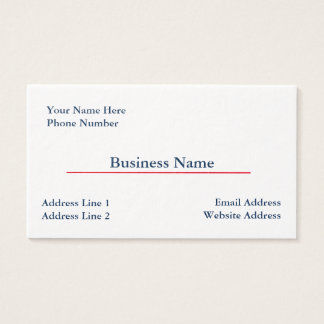However, I was wrong. He was hired to be the chief marketing officer. As a marketer, I could see red flags in his résumé that the company CEO, who had no marketing experience, did not spot. The hire had made it through multiple rounds of interviews to get the job, but with me, he wouldn’t have made it past the first round. Unsurprisingly, the company let him go after about 60 days.
Unfortunately, swing-and-miss hires happen more frequently than you might think. A company can make major mistakes when bringing in new personnel because its hiring manager does not consider all the relevant information before making a decision.
The cost of a bad hire
A new hire’s lack of experience or an inability to execute will cost your company time and money. An employee who does not pull his weight can hinder your company’s time to market, costing the firm in lost opportunities.
The direct costs of a bad hire can certainly add up, and these effects are not just anecdotal. Numerous studies have been conducted to estimate the direct costs of a bad hire. According to the U.S. Department of Labor, a bad hire costs a company at least 30% of that employee’s first-year earnings.
A CareerBuilder survey noted that bad hires decrease productivity, compromise work quality, and decrease morale—ultimately increasing overall costs and losing valuable time. The average cost of one bad hire is more than $18,700.
The chief marketing officer from the opener example changed some things in the organization, which negatively impacted office morale. The company lost some of the newly minted reporting that the team had developed over the previous six months. Employees were finding it harder to do their jobs, and some of the best employees left in frustration. So in addition to needing a new CMO, the company suddenly had multiple holes to fill.
Companies often make hiring mistakes because hiring managers lack a deep understanding of the ins and outs of the role. Additionally, the organization might not have knowledge or processes in place to fully support candidates once they are hired.
There are several ways to position your next hire for success. These steps can ensure you find and retain the best person for your next open position.
1. Understand the tactical requirements
It is easy to download white papers and research and just rattle off lingo. Unfortunately, many job candidates do this, so you need to ensure someone who understands the tactical requirements of the job is part of the vetting and interview process. If you are hiring for a marketing position, bring in a marketing consultant to help draft the job description and vet candidates if you do not have the skill set in-house.
Dig deep and then dig deeper to find the best fit. Send out a list of technical questions to all qualified applicants to answer before you bring them in to interview. This will verify they have the appropriate skills and will help weed out unqualified candidates.
You also can have candidates work on an internal project as part of the process. When we hire marketers, we take it one step further by paying potential employees to contribute to internal projects during the vetting process. For example, we have them contribute to our monthly newsletter or launch a social media campaign. A candidate will have to hit certain metrics—such as deadlines, open rates, and click-through rates—during the trial period. This might not be feasible for all candidates, and if this is not an option for your company, have the candidate walk you through a case study.
2. Craft high-quality job descriptions
Showcase your company culture and objectives, but avoid being too cutesy. Include a standard job title with a description of the job, how it contributes to the company’s mission statement, and how it impacts society as a whole. A posting with a standard job title will outperform a job listing that tries to get creative, a Workopolis poll found. For example, “administrative assistant”performed 36% better than “administrative guru.”
Be honest in your job description. Accurately describe what you need and use a tone that matches your company voice. Create a checklist of must-haves and nice-to-haves to further clarify the job’s requirements, but avoid posting a long list of responsibilities. Try to list the key job functions in five to seven points so you don’t bog down the applicant with the minutia of the position.
If the job is a purely tactical role, I look for doers and not thinkers. Focus on what candidates do day-to-day, such as track deliverables or research target events, rather than a list of accomplishments. Ask them how they specifically contributed to meeting their teams’ goals to see what they are able to bring to the table every day.
3. Include your team in the hiring process
Employees can be your best recruiters. More than 30% of external hires in 2016 came fromemployee referrals. Moreover, employee referrals are more likely to be a cultural fit.
The candidates’ future internal partners, colleagues, and direct reports will bring unique perspectives on what is required in the role. By involving them, you’ll find the post-hire roles and responsibilities less contentious in high-growth environments. These various touch points also offer applicants the chance to see whether the company is a good cultural fit.
It is important to share the details on how things get done—what the employee is accountable for, how the teams interact, and how you track performance against goals. This information helps potential employees understand what is expected. And you can gauge their reactions or ask candidates how they might improve the process.
4. Introduce new hires to their team
As part of the process, introduce new hires to their colleagues and direct reports for seamless integration. Discuss how your existing employees will support the new hire and vice versa. Consider having the new hire shadow someone for a few hours before they accept your offer. This helps save time and money if the role is not a good fit.
This point is even more critical for a cross-functional position. Each team will have its own interface and knowledge requirements. By being part of the process, you create an environment that embraces diversity of thought and allows for the creative solutions that will give your company a competitive edge.
5. Embrace diversity
Recent studies show that there is a direct correlation between the diversity of teams and overall innovation of the company. Those with above-average diversity reported that 19% more of their total revenue was tied to innovation and products or services launched within the past three years.
The key to introducing diversity is ensuring everyone feels included in the culture rather than thrown into the mix, and you can do this by personally introducing the new hire to everyone he or she will be working with, from day one or even before.
By taking the time upfront to craft a solid job description and bring the entire team on board for the hiring process, you will find it much easier to hire the best fit for your open role while expanding the culture and diversity of your company.










 Manual Prescription Pad (Large - Yellow)
Manual Prescription Pad (Large - Yellow)









